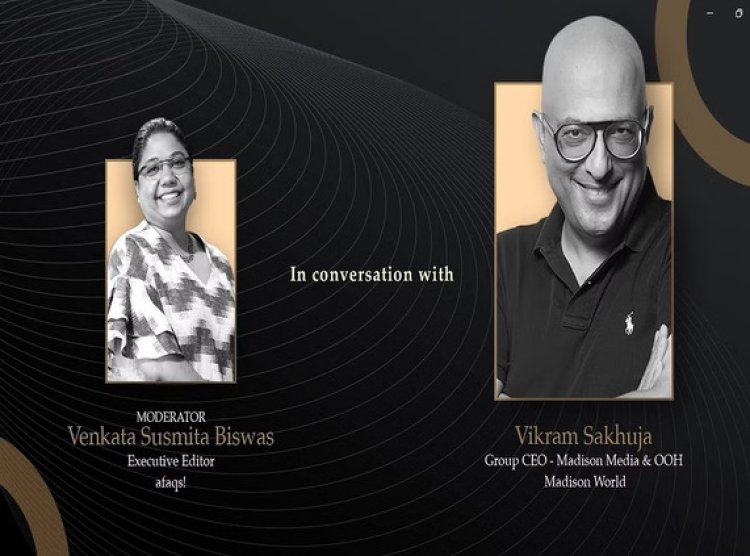70% of brand-building ad spend goes to TV: Vikram Sakhuja
In a new interview series with marketers and media leaders, we explore "Bollywood & Brands," discussing all aspects of marketing, media, and the film industry

The second half of 2024 looks promising for film enthusiasts. The year kicked off with "Kalki 2898 AD," which premiered in cinemas on June 27. Following this, Akshay Kumar's "Sarfira" is set to release in July, and Vicky Kaushal will star in "Bad Newz," a follow-up to the 2019 comedy "Good Newwz."
Hindi films have had a stellar run, achieving record-breaking numbers in both cinemas and on TV. This trend began with "Brahmastra" in 2022 and continued with blockbusters like "Pathaan," "Gadar 2," "Animal," and "Salaar" in 2023. In 2024, films such as "Fighter" and "Teri Baaton Mein Aisa Uljha Jiya" have also garnered immense love from cinema-goers, with their TV premieres scheduled for later in the year.
Given this backdrop, it's pertinent to discuss the significance and role of Hindi films in a brand’s media strategy. Vikram Sakhuja, Group CEO at Madison Media & OOH, sheds light on the factors that make films a crucial part of a brand’s media mix and the considerations brands must take into account when allocating funds to film channels.
Sakhuja, a media buying veteran, managed media and media research at P&G and Coca-Cola from 1988 to 2000. As the new millennium began, he established the marketing department for Star’s TV Entertainment Network. After successful tenures at Mindshare and GroupM, where he served as CEO South Asia, he joined India’s homegrown media investment network, Madison, in 2015.
Here are edited excerpts from the interview:
Leveraging Bollywood for Brand Building
Marketers use media for several reasons. The primary reason is to serve as a distribution channel — you've created an advertisement, and you want to ensure it gets seen. This accounts for 75-85% of the entire ad expenditure. At this stage, metrics like reach, frequency, and cost per rating point determine which medium or channel a brand should use.
Another way brands spend money is through associative marketing, where the media environment positively impacts the brand. Sponsorship is distinct from associative marketing. Sponsorship explicitly indicates that a particular program is brought to you by a certain brand. For instance, if Tata pays a significant amount for IPL, it’s not merely for distribution or associative purposes. Sponsorship involves being seen as the brand that brings an event to the viewer, which bestows a certain stature and adds higher-order values to the brand.
Most brands use films primarily as a distribution channel, but some can leverage them for sponsorship and associative marketing. Cinema plays a crucial role in this context. Cinema is a repeat business; many people watch a good film multiple times in theaters.
With films on TV, the business model expands to include repeat and "snacking" viewership. People often tune in to watch specific scenes of a show they love, which keeps them engaged momentarily before they move on. This viewing behavior helps ensure stickiness, making films a valuable component in media planning.
We found that films work particularly well for male audiences. For brands targeting men, including a film channel in the media plan is essential to achieve reach.
Winning Media-Mix for Brands
The optimal media mix depends on the category and the brand's specific goals. From a branding perspective, a 70:30 split favoring television is typical. Some categories might lean more towards digital, while others prefer TV. For example, the FMCG sector might have an 85:15 split. Attention is another crucial factor. Viewers’ attention on TV is about 60%, in cinemas it’s 70-80%, whereas scroll-based social media content might capture only 20% of the viewer’s attention.
The Pitch-Madison report projects TV ad expenditure to reach Rs 35,575 crore, while digital ad spend is expected to bring in Rs 46,565 crore. However, a significant portion of digital spend is performance-driven. I estimate digital video advertising for branding to be around Rs 14,000 - 15,000 crore.
Currently, there’s a pressing need for cross-media studies at the industry level. Although progress is slow, it’s crucial to accelerate these efforts.
Learning from the Cricket Playbook
In India, cricket is a leading passion, but films and Bollywood are not far behind. Those who developed cricket events as marketing platforms have excelled in building sponsorship and associative marketing capabilities, evident from the high title sponsor prices for IPL.
Brands need to understand how to leverage films for marketing to gain associated rub-offs or stature. Sponsoring a television premiere of the latest blockbuster should be a more frequent strategy.
Historically, we’ve had events like the Prudential World Cup and the Barclays English Premier League, which conferred stature on the sponsors. The English Premier League is a major passion point, not just in the UK but also among India’s elite. This kind of sponsorship value is still untapped with films. My advice to film media platforms is to emulate the cricket marketing model to extract similar sponsorship value from films.

 Sumit Rawat
Sumit Rawat 










